In the modern world, many medical and social problems emerge unexpectedly and have a specific course, one of which is the disease of civilization - psoriasis. The disease occurs in 1. 5 - 2% of the inhabitants of progressive countries, it spreads equally between males and females, and it manifests regardless of the patient's age.
What is psoriasis or psoriasis?
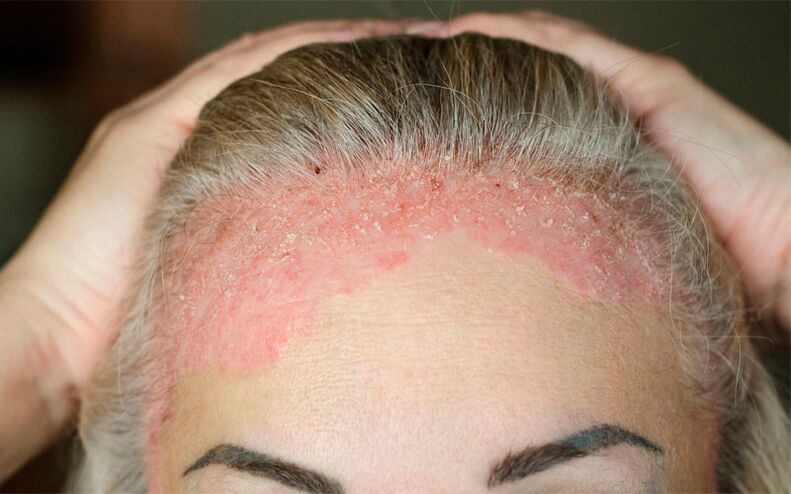
Psoriasis or psoriasis is a genetically determined skin pathology based on a chronic recurrent inflammatory process of the skin (impaired keratinocyte maturation) caused by the influence of triggering factors. The localization of the rash is very multifaceted. The location of psoriasis foci can occur either on the oral mucosa, on the scalp, on the extremities, on the extensor surfaces of the nails, or on the whole body.
Since psoriasis is a systemic disease, lesions will also be characteristic of cardiovascular, neurological, musculoskeletal and other systems. In addition, 80% of initial cases manifest as scalp failure, so in this article we pay special attention to the specific localization of psoriasis.
Causes of scalp psoriasis
There are two types of psoriasis: early and late. Early types are determined by genes, and heredity plays an important role here. It is known that having one parent with the disease increases the child's risk of psoriasis by 14%, while both parents have a 40% increased risk of psoriasis.
There are more than 100 factors that cause lichen scaly, the most common of which are:
- genetic
- viral
- Infectious (tonsillitis) and allergies
- Stressful (psychosomatic)
- endocrine
- Metabolic disorders (lipids, enzymes)
- Immune disorders.
Symptoms of Scalp Psoriasis
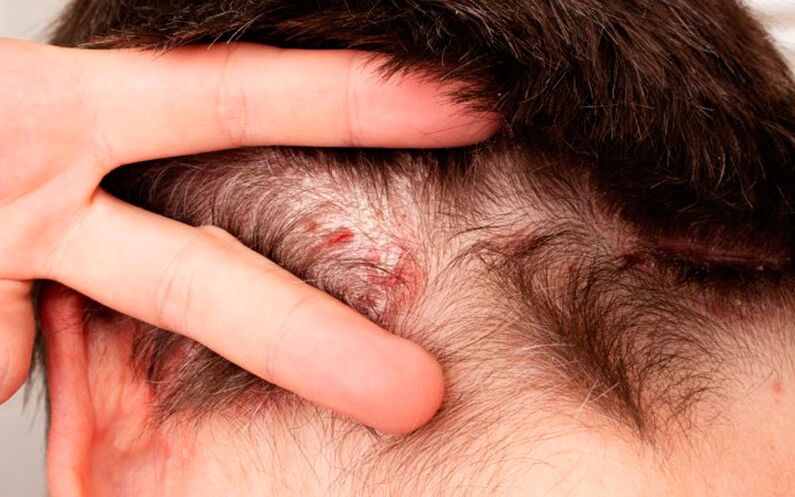
A characteristic of psoriasis is a symmetrical flat bump above the surface of the skin with evenly rounded edges and increased roughness combined with a large number of easy-to-remove silvery scales. The rash can vary in size from 1mm to 2cm, so these formations often coalesce and form patches of varying configurations, which can reach 10cm or even 20cm.
What often occurs in psoriasis is what's called a "psoriatic crown" -- a tumor that spreads along the hairline to the smooth skin of the neck or temporal region. An obvious symptom that spreads in people with scalp psoriasis is itching.
Psoriasis is defined by three main symptoms (the psoriatic triad):
- "Stearic Stain" - Scraping off psoriatic plaques with a glass slide results in thinning of the scales, enhancing the snow-white color of the surface, similar to a drop of frozen stearin.
- "Terminal Film" - scratch further and a smooth translucent surface will be observed.
- "Blood Dew" - Small droplets of blood appear when scratching.
Developmental stages of psoriasis
The psoriasis process consists of 3 subsequent stages:
- I am progressing
- II Fixed
- III return
Progressive stage
It is characterized by the formation of new papules that increase in diameter. The peeling process does not extend to healthy areas of the skin, but leaves a narrow pink band along the periphery of the plaque. The patient's main symptom is itching. Furthermore, for the progressive or acute phase of psoriasis, the presence of Koebner's phenomenon is characteristic - the formation of new papules 7 days after skin lesions. Has triad symptoms of psoriasis.
stationary
At this stage, no new elements of the rash appear, and the manifestations of itching decrease or disappear completely. The diagnosis of the psoriasis triad is problematic, and Koebner's symptoms are negative.
regressive
During the regression phase, peeling is reduced and the plaques disappear, but hypopigmented spots are formed. No symptoms of psoriasis were detected. Notably, even after the regression phase, "plaques of responsibility" were still present in the scalp, knee and elbow areas.
Disease stage according to the extent of the injury
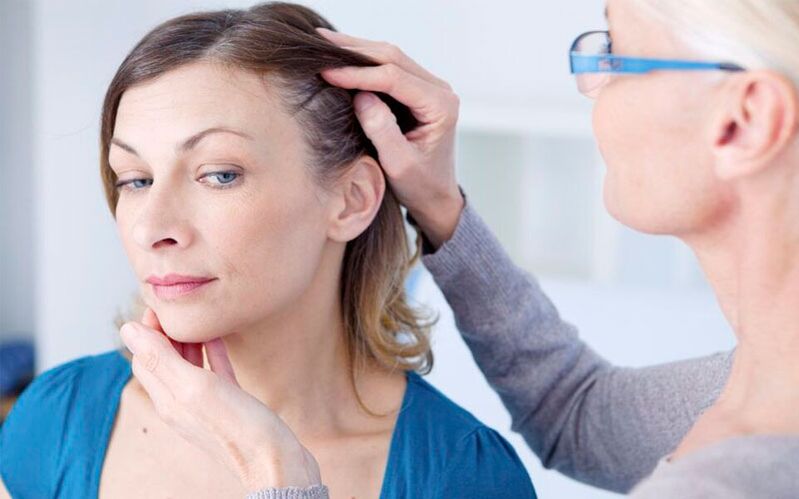
There are 3 stages of psoriasis, depending on the affected area:
- Mild - less than 3% affected area
- Moderate - prevalence of papules from 3% to 10%
- Severe - lesions are located on more than 10% of the skin.
How to Treat Head Psoriasis
Psoriasis has a variety of drug and non-drug combination treatments designed to minimize lesions, improve patients' quality of life, and reduce recurrence rates.
Treatment for psoriasis depends on the extent of the lesions, the size and age of the patient. If other lesions of organs and systems are present, correct them. The patient's diet is a limited intake of salt, fat, and fast carbohydrate-rich foods.
medical treatement
Effective means of systemic treatment of psoriasis are as follows:
- Desensitization (30% sodium thiosulfate solution),
- sedatives (valerian infusion, tranquilizers),
- antihistamines,
- diuretics,
- Vitamins (A, B1, B12, B6, E, C),
- hepatoprotective drugs,
- pyrogenic preparations,
- immunostimulatory drugs,
In the acute common form of psoriasis, as well as in erythroderma, short-acting corticosteroids (triamcinolone) are prescribed.
With damage to the musculoskeletal system (joints), NSAIDs (diclofenac, voltaren, nimesulide) are required.
For the treatment of complex forms of psoriasis, cytostatics (methotrexate, azathioprine) are used.
In severe forms of psoriasis (index greater than 15 units), cytostatics, sedatives, and aromatic retinoids are added to treatment. Glucocorticoids are used in severe and complicated scalp psoriasis attacks.
In mild cases of psoriasis (PASI index up to 15 units), desensitization medications, detoxification and antihistamines, and hepatoprotective medications are used.
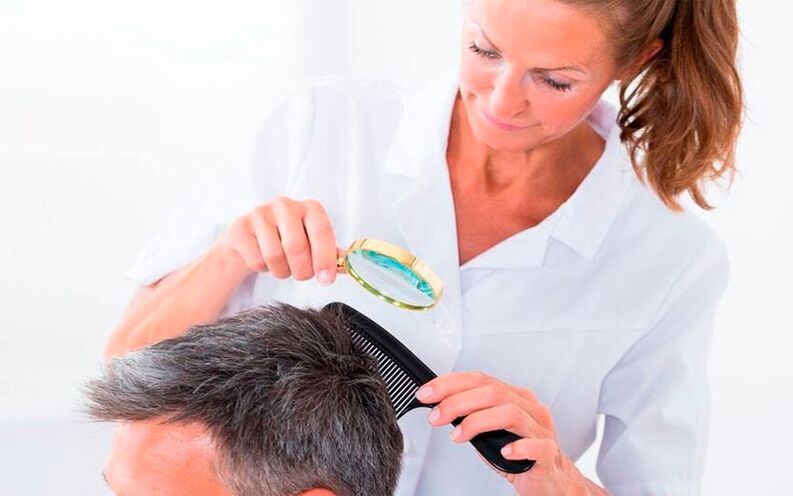
The use of topical treatments depends on the stage of scaly lichen:
- Progressive - 1 - 2% salicylic acid ointment, corticosteroid cream and ointment
- Fixed - 5 - 10% naftalan ointment, 3% salicylic acid ointment, 2 - 5% sulfur tar ointment, chamomile decoction bath
- Degenerative - 3-5% salicylic acid ointment, 10-20% naftalan ointment, 5-10% sulfur tar ointment, psorkutan
Salicylic acid ointments, lotions, and shampoos Psoriks, tar creams, and zinc-containing preparations are widely used to treat scalp psoriasis. Also, an integral part of treating the disease is taking a warm bath every 2-3 days. In the winter form of psoriasis, treatment is based on the use of ointments and UV radiation.
non-drug treatment
Psoriasis treatment doesn't just rely on medication. Using light therapy methods can also help with quick recovery and relief.
There are the following types of radiation exposure:
- Photochemotherapy (PUVA therapy) is a type of light therapy that uses a combination of photosensitizers. The mechanism is that UV radiation acts on the surface of the skin to treat complex forms of psoriasis.
- Selective treatments are more effective in treating exudative and uncomplicated forms of psoriasis when the number of rashes is small. The course of treatment consists of 20-30 courses of treatment, and the effective rate is 80%.
- Narrow Band Therapy - Used in the presence of superficial psoriasis, the light does not penetrate deep into the skin ball, but only has a superficial effect. The procedure is designed to prevent the process of malignant degeneration of cells.
- Narrow Spectrum UVB Treatment - This type of treatment significantly reduces the occurrence of side effects such as redness and burns. The surgical procedure is 20-30 times only for skin lesions.
In addition, spa treatments also had a positive impact. Known sources of healing are Lake Kunigonda, the Crimean coast, the Black Sea and the Dead Sea.
experimental method
Scientists have not stopped and continue to find new and effective treatments for psoriasis, among which are the following.
plasma exchange
A mild poisoning procedure that helps remove pathogenic components and toxins from the plasma. Typically, up to 30% of the blood is removed after a single operation. This maneuver is used in severe and complex cases of psoriasis. Plasma electrophoresis was performed in 3-6 times with a one-week break.
The mechanism of this process is as follows: certain membranes filter the intercellular fluid and return it to the blood, while retaining as much beneficial components as possible and destroying pathogenic toxic substances.
cryotherapy or "cold therapy"
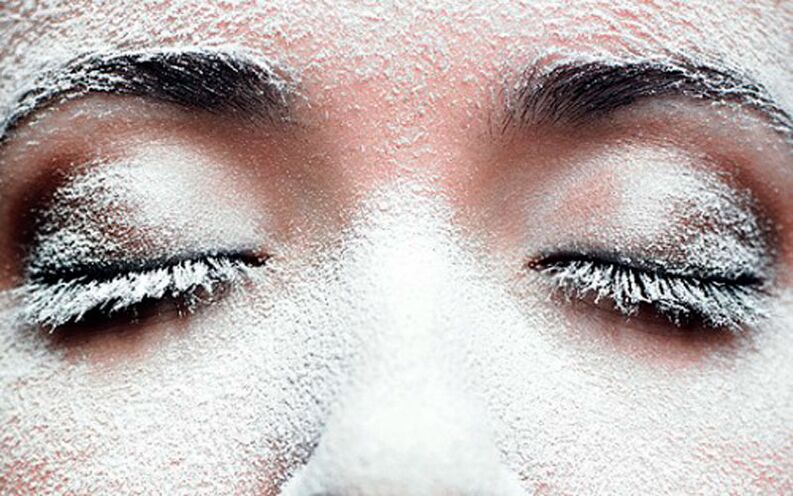
The treatment of this disease is due to the effects of ultra-low degrees on the body. The violent effects of cold help activate the immune system and stimulate metabolism. This procedure has complex effects on the entire body, as well as a local, focus on skin lesions.
It is important to remember that cryotherapy is not suitable for all patients. Due to the anatomical features of the location of the blood vessels, some people experience cramping, swelling, and dramatic dilation of the blood vessels, resulting in disturbed blood circulation. In addition, some patients may be susceptible to allergic reactions such as cold urticaria.
Effects of cryotherapy:
- Increase the body's defense
- Improved regeneration process
- Negative symptoms disappear: itching, burning, peeling
- Improve skin metabolism
- Extend the remission period.
Immunobiologics
These are protein-based products that have a direct impact on the immune system and prevent the development of concomitant diseases. During the psoriasis process, the body is constantly replenished due to excess TNF protein. These drugs inhibit the action of TNF-a, so the symptoms of the inflammatory process of psoriasis are reduced.
Ozone therapy
A new and effective treatment for psoriasis. It is well known that ozone has detoxification, anti-inflammatory, anti-platelet, and immunomodulatory effects. The advantages of ozone therapy are easy to use, quick effect, high reliability, and no side effects at all.
Features of treatment of psoriasis in children and adolescents
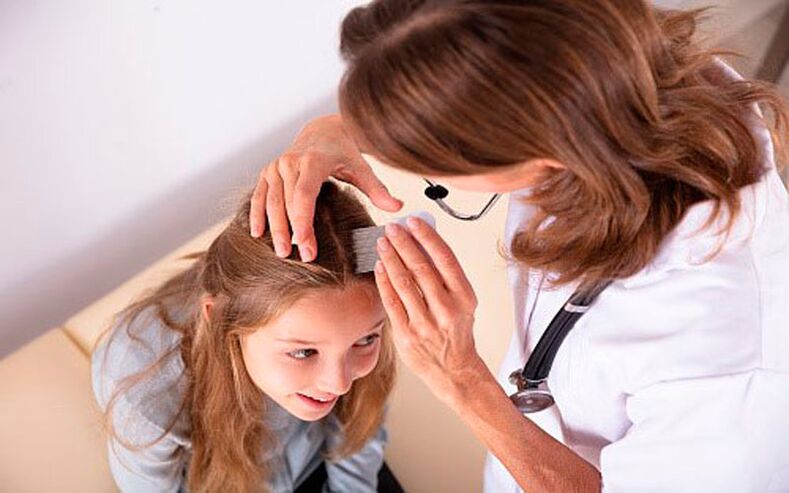
It should be noted that psoriasis is less common in children than in adults. The reasons are the low detection rate of psoriasis, frequent relapses, and significant remission periods of up to 12 years.
The clinical presentation of childhood psoriasis is characterized by frequent lesions on the skin beneath the hair. Girls are twice as likely to be sick as boys, and this is linked to endocrine disorders that occur during adolescence. Children are characterized by distinct images of the pathological process (marked inflammation and varying degrees of itching).
In children under the age of 10, psoriasis symptoms appear differently than in adults. The rash occurs locally on atypical sites, such as the face, back of the head, genitals, or deep in the subcutaneous folds. The triggering mechanism of disease onset is usually acute infection (influenza, pneumonia), psychological and emotional stress.
In most children, the first signs of skin lesions appear on the scalp with redness and scaling. Hair loss is uncommon even in the most severe cases of scalp psoriasis.
Treatment of childhood psoriasis is based on the use of medicated ointments and creams; in severe attacks, in combination with other drugs. This approach will allow you to reduce the negative manifestations of the disease and help speed up recovery.
How to Treat Head Psoriasis at Home

In the fight against dry scalp with psoriasis, a variety of primers, lotions, herbal shampoos, water-based lotions have been used to not only relieve skin inflammation but also help relieve psoriasis symptoms.
The most popular home remedies for psoriasis are creams, salicylic acid ointments, and specialized shampoos.
cream
Use non-hormonal preparations based on natural ingredients. Active ingredients can vary, the most common of which are:
- Zinc - quickly eliminates skin dryness and inflammation, has antiseptic properties, has antibacterial properties
- Vitamin D - used to treat simple forms of psoriasis, relieve unpleasant symptoms such as peeling and itching, and also helps promote regeneration
- Urea and naftalan - nourishing and soothing to the skin
- Herbal extracts - have antiseptic properties, eliminate the aggravation of allergic and inflammatory processes
- Anthocyanins - promotes quick recovery and relieves unpleasant manifestations of psoriasis
- Urea and Beeswax - for sensitive skin that needs hydration and nourishment to restore the protective barrier
Salicylic Acid Ointment Against Psoriasis
Salicylic acid from willow bark is the active ingredient in salicylic acid ointment, which has anti-inflammatory and regenerative properties. The advantage of salicylic acid ointment compared to hormonal drugs is that there are no side effects.
Positive properties of salicylic acid ointment:
- Fights inflammation - eliminates itching and redness
- Antiseptic - eliminates pathogenic microorganisms
- Keratinogenic effect - prevents the occurrence of purulent foci, promotes the regeneration process.
- Destroys keratinous substances - exfoliates keratin.
Zinc salicylate ointment is also widely used to treat psoriasis with equally good results.
shampoo
Shampoos for scalp psoriasis include:
- Based on birch tar. Tar helps to gently cleanse the skin's cuticles, impurities, itching and burning, and has antifungal properties.
- Antifungal - The main active ingredient, ketoconazole, eliminates the proliferation of fungal infections and promotes the healing of skin wounds.
- Consists of salicylic acid, ketoconazole, zinc. This spray shampoo counteracts the inflammatory process, softens the skin and has antiseptic properties.
- recovery. Normalizes the secretion of subcutaneous fat, strengthens the hair and relieves inflammation.
It's also important to remember that when washing your hair with psoriasis, you should only use lukewarm water, not hot water. It is necessary to minimize the use of hair dryers, curling irons and irons.
Folk remedies for psoriasis

Lotions based on celandine, aloe vera, chamomile, apple cider vinegar are great for treating psoriasis. Apply a bandage moistened with the solution to the injury. This process reduces inflammation, kills pathogens and improves skin metabolism.
Also effective are kefir and clay masks, which are also part of traditional medicine. This mask also moisturizes the hair, has anti-inflammatory properties, and improves blood circulation to the scalp.
Which product is better?
For the treatment of scalp psoriasis, it is best to use mild, gentle, fragrance-free products. Regular cleansing and moisturizing are the foundation of proper hair and skin care for psoriasis. Importantly, the products used help to normalize the nutritional balance, restore the affected skin area, maintain the pH of the scalp, and hydrate the stratum corneum of the epidermis.
All these effects and even more are characteristic of products from the Fitomarket online store. Here you can not only choose the means and methods best suited for high-quality scalp psoriasis care, but also get the right advice on the medicines that are right for you.
FAQ
Can psoriasis be cured with zinc ointment?
Zinc ointment has anti-inflammatory, antiseptic, encapsulating effects, and promotes the formation of a protective layer on the skin surface. If you lubricate the affected area with zinc ointment daily, positive effects will appear quickly, but this treatment will not cure psoriasis completely, as treatment should be complicated.
Can you cure scalp psoriasis with hydrogen peroxide?
Hydrogen peroxide mechanically cleans and removes toxins from damaged skin by releasing reactive oxygen species, but as with zinc ointment, scalp psoriasis cannot be cured with this ingredient alone.
Psoriasis contagious?
Psoriasis is not contagious, and because it is non-contagious, it is not worth avoiding contact and communication with people with the disease.
Is Scalp Psoriasis Dangerous?
If left untreated, psoriasis can lead to serious complications and even death. Don't forget that psoriatic lesions can spread to the deeper layers of the skin, as well as to other organs and systems of the body (nails, cardiovascular system, musculoskeletal system, etc. ).
How to tell the difference between psoriasis and dermatitis
Seborrheic dermatitis of the scalp is known to never affect smooth skin and is characterized by the absence of an infiltrating process, whereas seborrheic psoriasis forms a "psoriatic crown" that moves to smooth areas of skin on the forehead and neck. It is also worth notingThe genetic factors in the development of psoriasis.























